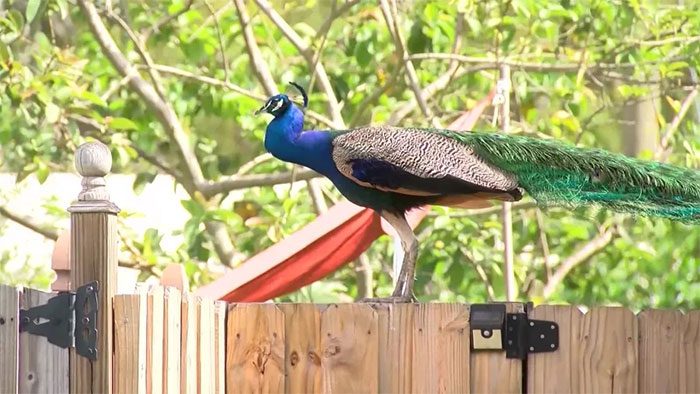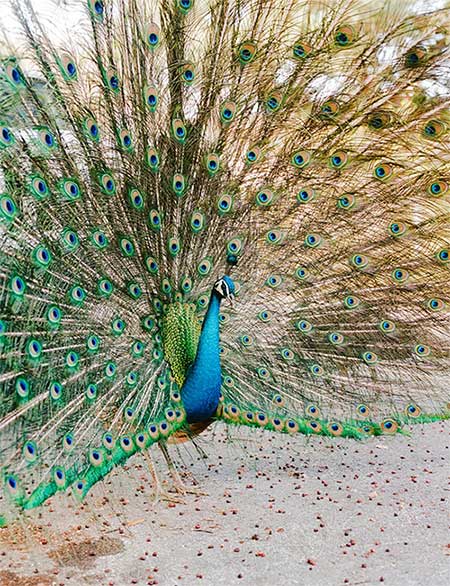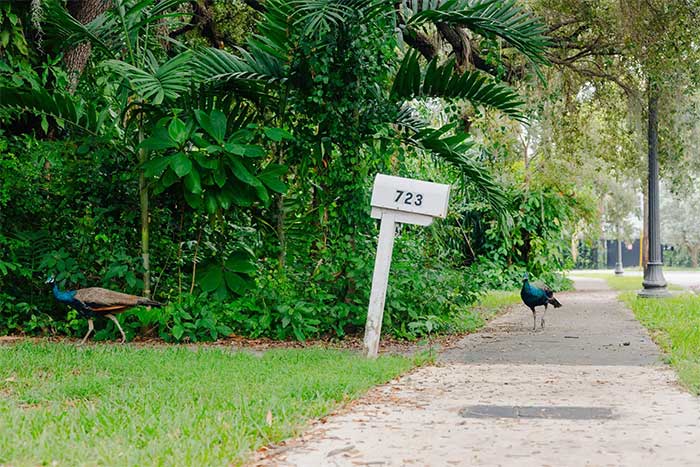Residents in a village in Florida (USA) are determined to sterilize a noisy bird species. What is this creature?
The troublesome animal in Florida is the peacock, one of the most beautiful birds in the world. Peacock populations are not only increasing but also causing significant issues for the residents of Pinecrest.
The peacocks in Florida are visually stunning. However, for many decades, the price of their beauty has been property damage. In particular, the mating calls of these birds are excessively loud. At night, peacocks often emit a harsh, shrill call to attract mates, leading to sleep disturbances for many residents.
What will Pinecrest, a village in Florida, do about the overpopulation of peacocks? The answer has caused panic among peacocks everywhere: sterilization through the castration of male peacocks. John J. Harris, a veterinarian in Florida, will perform the vasectomies on these birds. This is believed to be beneficial for both parties.
The veterinarian stated that the breeding rate of peacocks will decrease. Meanwhile, male peacocks will retain their confidence and continue to impress females with their spectacular feather displays.

Peacocks often appear near residential areas, causing numerous disturbances for the residents of Pinecrest. (Photo: Wane)
In fact, many residents in South Florida have complained about peacock droppings and loud calls, as well as the tendency of peacocks to attack their own reflections, damaging cars. Specifically, these birds often scratch car paint.
For decades, Pinecrest residents have felt nearly powerless against the growing invasion of peacocks. In some areas, residents have reported flocks of peacocks numbering in the hundreds.
Furthermore, in recent years, finding a permanent “home” for the peacocks has become increasingly difficult, as trappers refuse to handle them and zoos are not accepting them. A few years ago, local authorities attempted to make Pinecrest less appealing to the birds by advising residents not to leave food outside.
However, this solution seems ineffective, as the number of peacocks continues to rise. Peacocks are foraging in residential gardens. They are also scratching roofs, leaving droppings everywhere, and engaging in noisy mating rituals.
To address this issue, Pinecrest, a suburb of Miami, has decided to hire a veterinarian to perform vasectomies on male peacocks.
Sterilization to Prevent Peacock Invasion

According to veterinarian Don J. Harris, sterilization does not reduce the attractiveness of male peacocks. (Photo: NYtimes).
Dr. Don J. Harris, the veterinarian hired by Pinecrest to perform the vasectomies, shared: “Peacocks are truly polyamorous. Thus, if we sterilize one male peacock, we can prevent seven females from breeding. This will yield exponential benefits.”
Dr. John J. Harris noted that the vasectomy procedure for male peacocks is very simple and quick, taking about three minutes per testicle. By the time the male peacocks wake up after the procedure, they will be unaware of what has happened.
The trappers will act upon receiving complaints from residents, bringing the male peacocks to Dr. Harris.
Dr. Harris mentioned that the testosterone levels of the male peacocks will not be affected. The males will remain as attractive and alluring as before.

It is not uncommon to see peacocks walking in the streets of Florida. (Photo: NYtimes).
Pinecrest, a village with about 18,000 residents, has decided to trap male peacocks and then perform vasectomies to prevent this species from overbreeding and causing disturbances for local residents.
It remains uncertain whether the pilot program for sterilizing male peacocks in Pinecrest will be successful. However, in this village in South Florida, where residents have few options but to coexist with invasive species like pythons and iguanas, sterilization of male peacocks is seen as a new approach to tackling an old problem.
Nevertheless, experts indicate that trapping male peacocks with sharp beaks and claws is not a simple challenge.
Experts have mentioned that with the vasectomy solution, it may take one to two years for the male peacock population to gradually decrease. So far, this appears to be the perfect solution to reduce the invasion of peacocks in Pinecrest.


















































